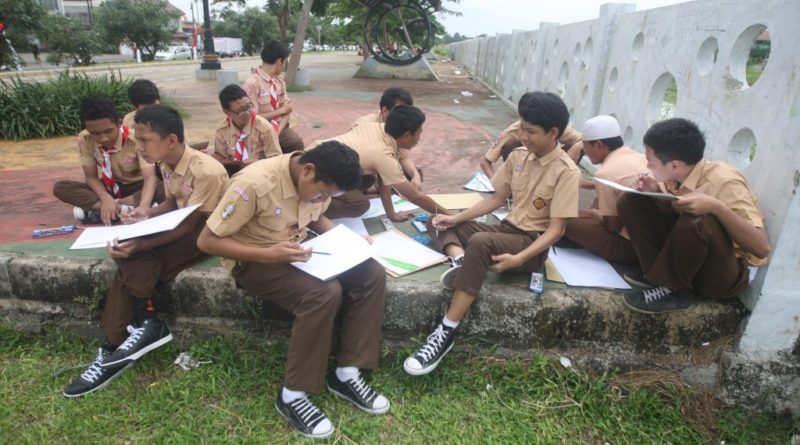Jakarta: Insight – THIS MONTH’S INSIGHT: URBAN INNOVATION – Jakarta Globe


.
Nurhayati, 32, moved from a small town in Central Java to Jakarta in 2001. Her father, a high school teacher, had saved enough money for her to continue her studies at a state university in the capital.
After completing her economics degree in the prescribed four years, she found a job in a bank straightaway. Three years later, she married her boyfriend from college, who worked in a ministerial office.
Together they bought a small house in Ciledug, a suburb on the outskirts of Jakarta
.
Her story is typical to the millions of Indonesians who have moved to big cities over the past few decades to find better opportunities.
Seven out of every 10 Indonesians would be living in cities by 2025, according a projection by the World Bank, compared to just four in 10 two decades ago.
“In 2045, I believe close to 80 percent of our population will be living in cities. This urbanization trend will only get stronger… it’s happening globally,” Development Planning Minister Bambang Brodjonegoro told the Jakarta Globe.
.

.
Economic Behemoth
Cities are more efficient in generating wealth. There are more people with more diverse skills available in a relatively small area. This makes access to goods and services cheaper, encouraging people to consume more, which creates a virtuous circle that allows the economy to expand. Economists call this the “agglomeration effect.”
Global studies show that when a city doubles in size, the per-capita income of its population increases by an average of 15 percent, thanks to the expanding market.
City dwellers in Indonesia make twice as much money compared with their rural counterparts, according to data compiled by the Central Statistics Agency (BPS).
Between 2001 and 2011, Indonesian cities accounted for 89 percent of the 20 million jobs that were created, World Bank data shows.
Bambang said for every 1 percent increase in urbanization in Indonesia, the country’s gross domestic product grows by 4 percent, while the figure is 8 percent for Vietnam and 10 percent for China.
The main reason for the lower urbanization effect in Indonesia is decades of underinvestment in infrastructure. The country’s stellar economic growth was abruptly brought to an end by the 1997 Asian financial crisis, which stopped many crucial infrastructure projects in their tracks.
The country’s infrastructure spending dropped from 7 percent of GDP in the early 1990s to about 3 percent in recent years.
“Rapid urbanization has caught many cities unprepared,” said Vijay Padmanabhan, director for urban and water development at the Asian Development Bank.
Padmanabhan pointed out that some cities “continue to suffer from poor planning for mobility, water, sanitation and energy supply.”
While most of the responsibility for developing urban areas falls on city or local governments, the central government recognizes the need to invest in urban infrastructure.
Critical areas the central government has prioritized are public transportation, drinking water, sanitation and vertical housing.
Minister Bambang said the central government has made a commitment to help cities provide residents with basic infrastructure.
For example, it has taken on the construction of a $1.8-billion light rail transit system in the greater Jakarta area to complement the city administration’s own LRT project.
The central government will also help set up sewage treatment facilities in several cities.
“Hopefully, after that they can build other facilities on their own,” Bambang said.
Reducing traffic congestion also offers economic benefits.
“With better roads and public transportation infrastructure, Jakarta can reduce the estimated $3 billion lost to [traffic] congestion each year,” said Marcus Lee, a senior urban economist at the World Bank.
“With better water and sanitation infrastructure, city residents, particularly the poor, would fall ill less often from water-borne illnesses and thus save on health-care costs,” he added.
Housing, Vertical or Otherwise
“It is inevitable that in big cities, or urban areas in general, housing should be vertical. It can no longer be horizontal, since the price of land has skyrocketed so much,” Bambang said.
The government now prefers to support state-owned enterprises to engage in transit-oriented developments, building affordable apartment towers near or above public transportation stations, Bambang said.
“An urban family’s biggest daily expenses are for transportation and housing, not food. Transit-oriented development allows families to save money on both,” the minister said.
The private sector has adopted a similar approach, building entirely new urban developments near sprawling manufacturing areas.
The Lippo Group, for example, is building Meikarta, a new city near the Cikarang industrial area in Bekasi, West Java, with the aim of providing affordable housing to around a million workers in the area.
“Today, people typically spend three to four hours a day commuting, wasting precious fuel and adding to air pollution. This makes workers less productive,” Meikarta president Ketut Budi Wijaya said. “If workers can live near their places of work, they will be more productive.”
Jakarta’s urban villages, remnants of the city’s kampungs from the pre-urbanization era, have also found renewed political backing for revitalization.
These urban villages have earned recognition as a cheap housing solution in big cities. Architectural innovation adapted to the needs of a kampung will even allow it to house more people.
Vertical development will also allow cities to provide more open green spaces, in compliance with a 2007 law that requires a third of a city’s surface area to consist of such public spaces.
Meikarta will have a 100-hectare public park.
Other developers, such as Sentul City, which has been developing more than 3,000 hectares in Bogor district, West Java, also plan to create more green spaces to keep residents healthy and happy.
“[We] always aim to reduce the impact of pollution from the ballooning population in our area,” Sentul City chief project officer Ricky Kinanto Teh said.
Business Opportunities
Urbanization also creates greater demand for basic infrastructure and public services, which local governments have to provide, but most are unable to deliver.
For innovative companies or community-oriented administrations though, slack is opportunity.
Biomagg, a tiny company, came up with a novel solution to process food waste into animal feed and fertilizer using fly larvae.
Communities also set up so-called waste banks, which pay people cash for recycling paper or plastics.
Online-based ride-hailing services such as Grab, Go-Jek or Uber have further revolutionized the way people get around in a city with some of the worst traffic congestion in the world.
Government planning and service delivery at city level are often lacking due to “capacity constraints, including weaknesses in public financial management,” the ADB’s Padmanabhan said.
But there has been progress. City administrators in Jakarta, Bogor, Bandung and Makassar are already using high-tech equipment to do surveillance and quickly respond to residents’ complaints.
Developments in big data also hold the promise that cities will find new ways of resolving traffic problems.
New toll roads, rail-based public transportation and public spaces are being built across Jakarta and other major cities.
Nurhayati, now a housewife with two children, said she had seen enough progress in Jakarta to convince her to spend the rest of her life as a megalopolitan.
“Our life is here now,” she said.









